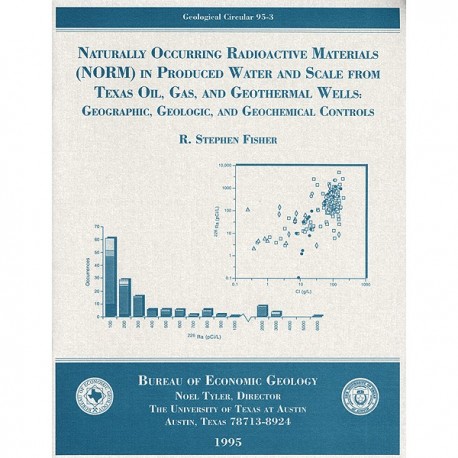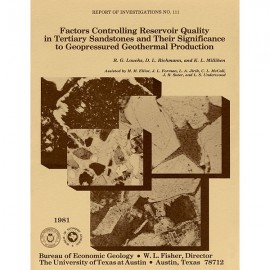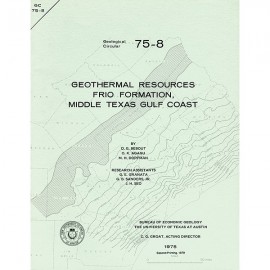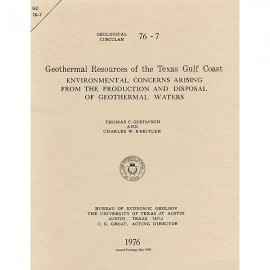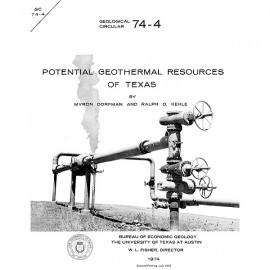Geological Circulars
-
Books & Reports
- Reports of Investigations
- Guidebooks
- Udden Series
- Geological Circulars
- Down To Earth
- Atlases of Major Oil and Gas Reservoirs
- Texas Memorial Museum Publications
- Environmental Geologic Atlas of the Texas Coastal Zone
- Mineral Resource Circulars
- Other Reports
- Seminars and Workshops
- Handbooks
- Submerged Lands of Texas
- Symposia
- Annual Reports
- Open File Reports
-
Maps & Cross Sections
- Thematic Maps
- Miscellaneous Maps, Charts & Sections
- Geologic Atlas of Texas
- STATEMAP Project Maps
- Geologic Quadrangle Maps
- Cross Sections
- Highway Geology Map
- Energy and Mineral Resource Maps
- Shoreline Change and Other Posters
- Wilcox Group, East Texas, Geological / Hydrological Folios
- Bouguer Gravity Atlas of Texas
- River Basin Regional Studies
- Featured Maps
- Posters
- Teachers & the Public
-
Geological Society Publications
- Gulf Coast Association of Geological Societies
- Alabama Geological Society
- Austin Geological Society
- Corpus Christi Geological Society
- Houston Geological Society
- Lafayette Geological Society
- Mississippi Geological Society
- New Orleans Geological Society
- South Texas Geological Society
- GCS SEPM Publications
- Historic BEG & UT Series
Naturally Occurring Radioactive Materials (NORM) in Produced Water and Scale from Texas Oil, Gas, and Geothermal Wells
GC9503
A free, digital version of this publication can be found on: Texas ScholarWorks
GC9503. Naturally Occurring Radioactive Materials (NORM) in Produced Water and Scale from Texas Oil, Gas, and Geothermal Wells, by R. S. Fisher. 43 p., 12 figs., 7 tables, 1 appendix, 1995. ISSN: 0082-3309.
To purchase this publication as a downloadable PDF, please order GC9503D.
ABSTRACT
Water produced from oil, gas, and geothermal reservoirs contains natural radioactivity that ranges from background levels to levels found in uranium mill tailings. Radioactivity in fluids and in the scale that forms in oil-producing and gas-processing equipment increases concerns for worker and public safety as well as costs of handling and disposing of naturally occurring radioactive materials (NORM), which include water, sludge, scale, and affected equipment. This study explored natural controls on such radioactivity to identify screening criteria by which high NORM activity can be anticipated on the basis of geologic or geochemical information. Such criteria can help State and Federal agencies target disposal regulations for situations likely to incur high radioactivity levels and can also prevent operators from making costly measurements if the likelihood of encountering elevated NORM activity is low.
NORM in oil and gas operations is caused mainly by radium-226 (226Ra) and radium-228 (228Ra), daughter products of uranium-238 (238U) and thorium-232 (232Ra) respectively, in barite scale. To explore natural controls on radioactivity, we considered the (1) geographic distribution of NORM in oil-producing and gas-processing equipment, (2) geologic controls on uranium, thorium, and radium in sedimentary basins and reservoirs, (3) mineralogy of NORM scale, (4) potential of Texas formation waters to precipitate barite scale, (5) radium activity in Texas formation waters, and (6) geochemical controls on radium isotope activity in barite scale. Our approach combined compilations of published data, collection and analyses of new water and scale samples, and geochemical modeling of scale precipitation and radium incorporation in barite.
We found that (1) elevated NORM levels (90th percentile in both major oil- and gas-producing regions of Texas) occur where volcanic rock fragments are abundant in sandstone reservoirs, (2) lithologic or mineralogic heterogeneities within reservoirs are a major control on NORM activities in produced water, (3) barite scale is the most likely NORM host in sludge and scale, (4) the potential for barite to precipitate from produced water increases with reservoir temperature, (5) high radium activity (> 200 pCi/L) occurs only if water salinity exceeds about 35,000 mg/L total dissolved solids, and (6) the radium activity of barite scale is predicted to vary significantly between major Texas basins. These results suggest that multivariate analysis of geologic and geochemical parameters may be useful in predicting NORM activity in produced water and scale in individual basins, plays, or reservoirs.
Keywords: barite scale, NORM, oil and gas reservoirs, produced water, radium
Citation
Fisher, R. S., 1995, Naturally Occurring Radioactive Materials (NORM) in Produced Water and Scale from Texas Oil, Gas, and Geothermal Wells: The University of Texas at Austin, Bureau of Economic Geology, Geological Circular 95-3, 43 p.
